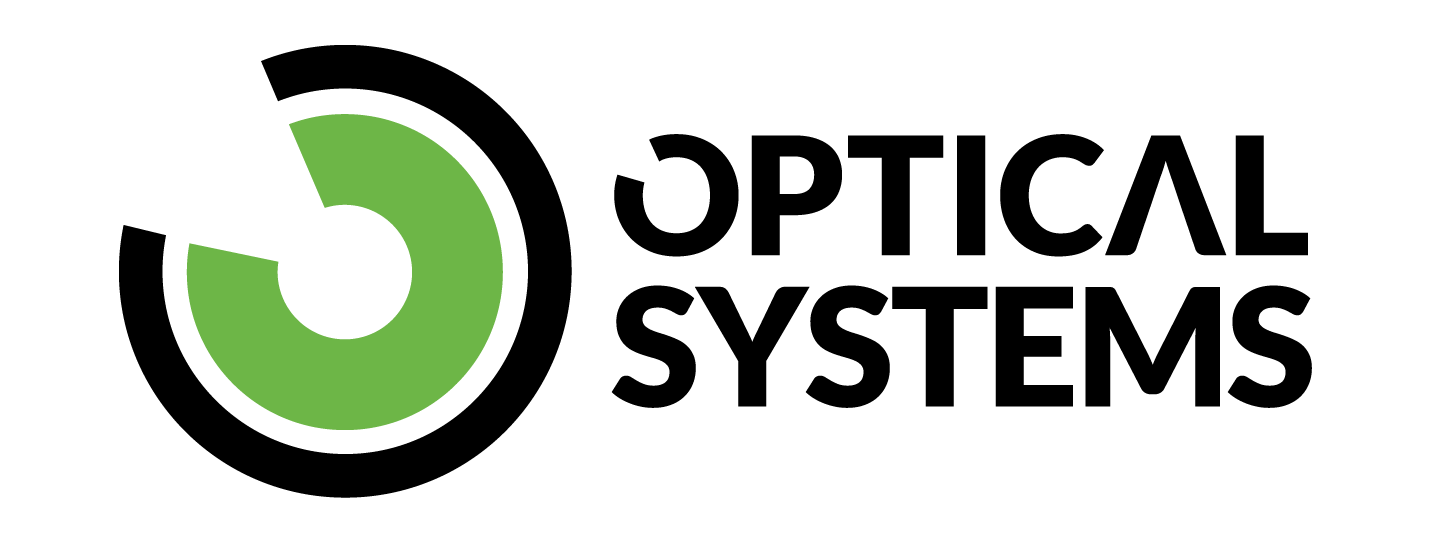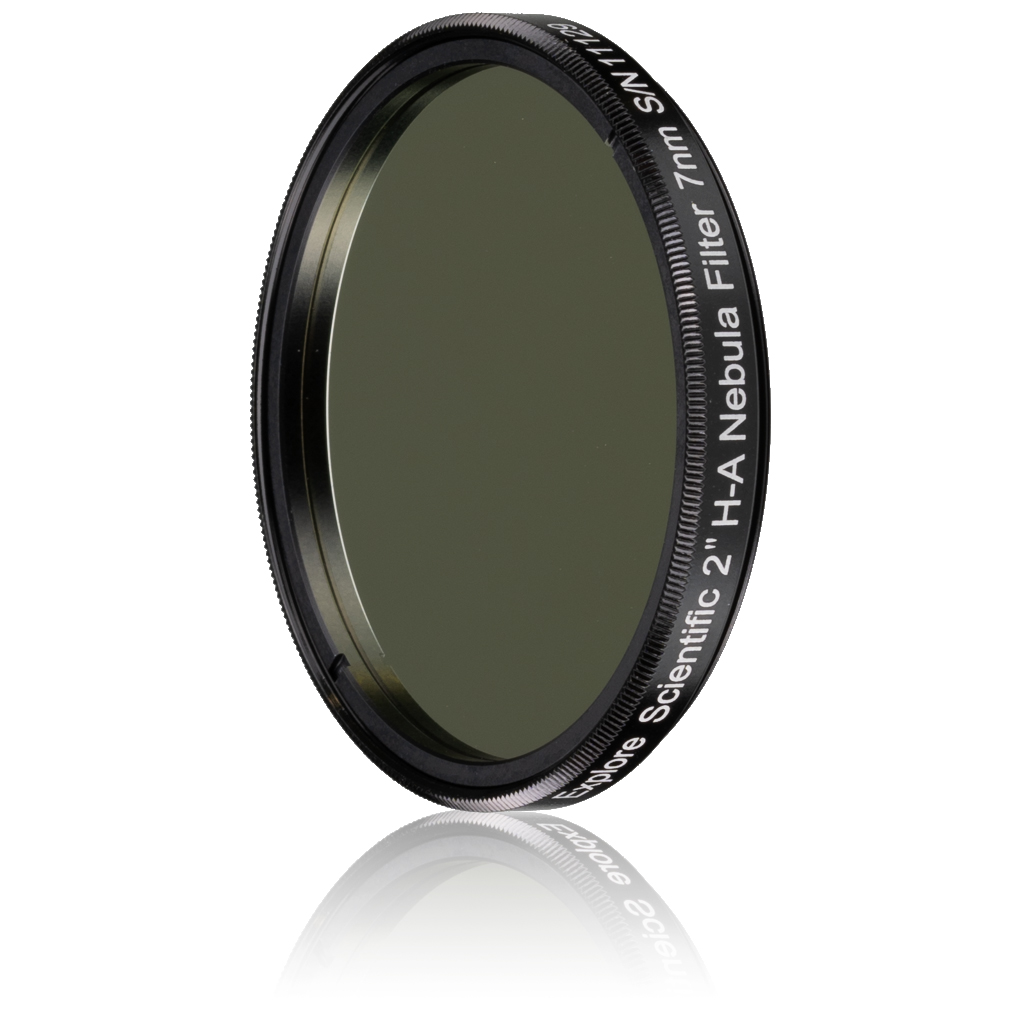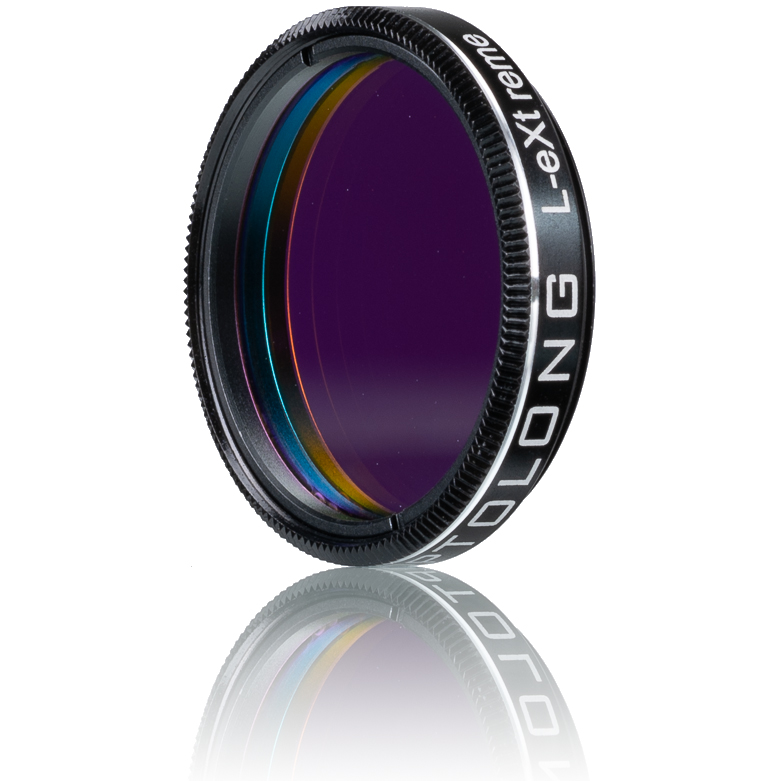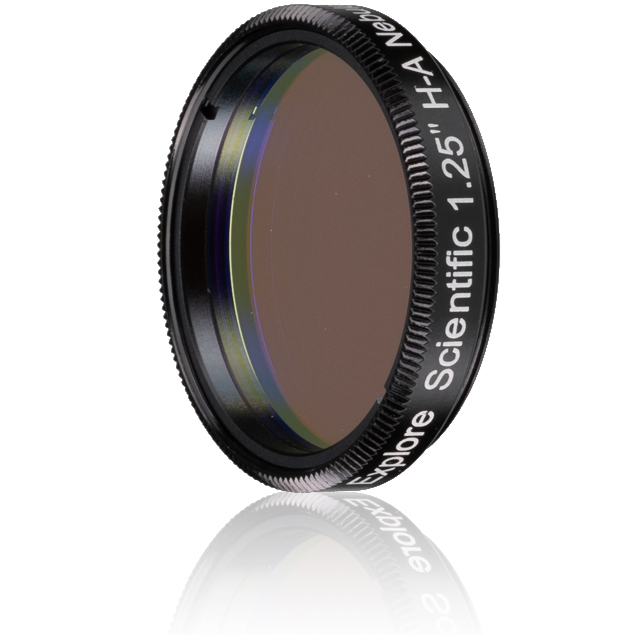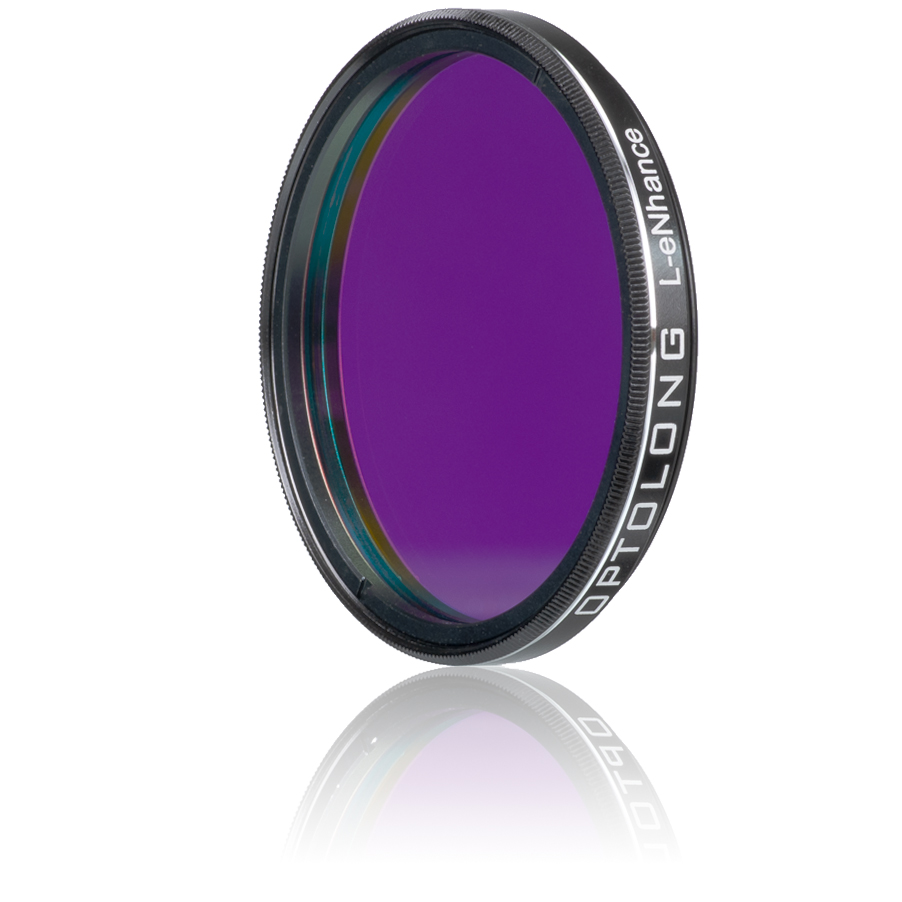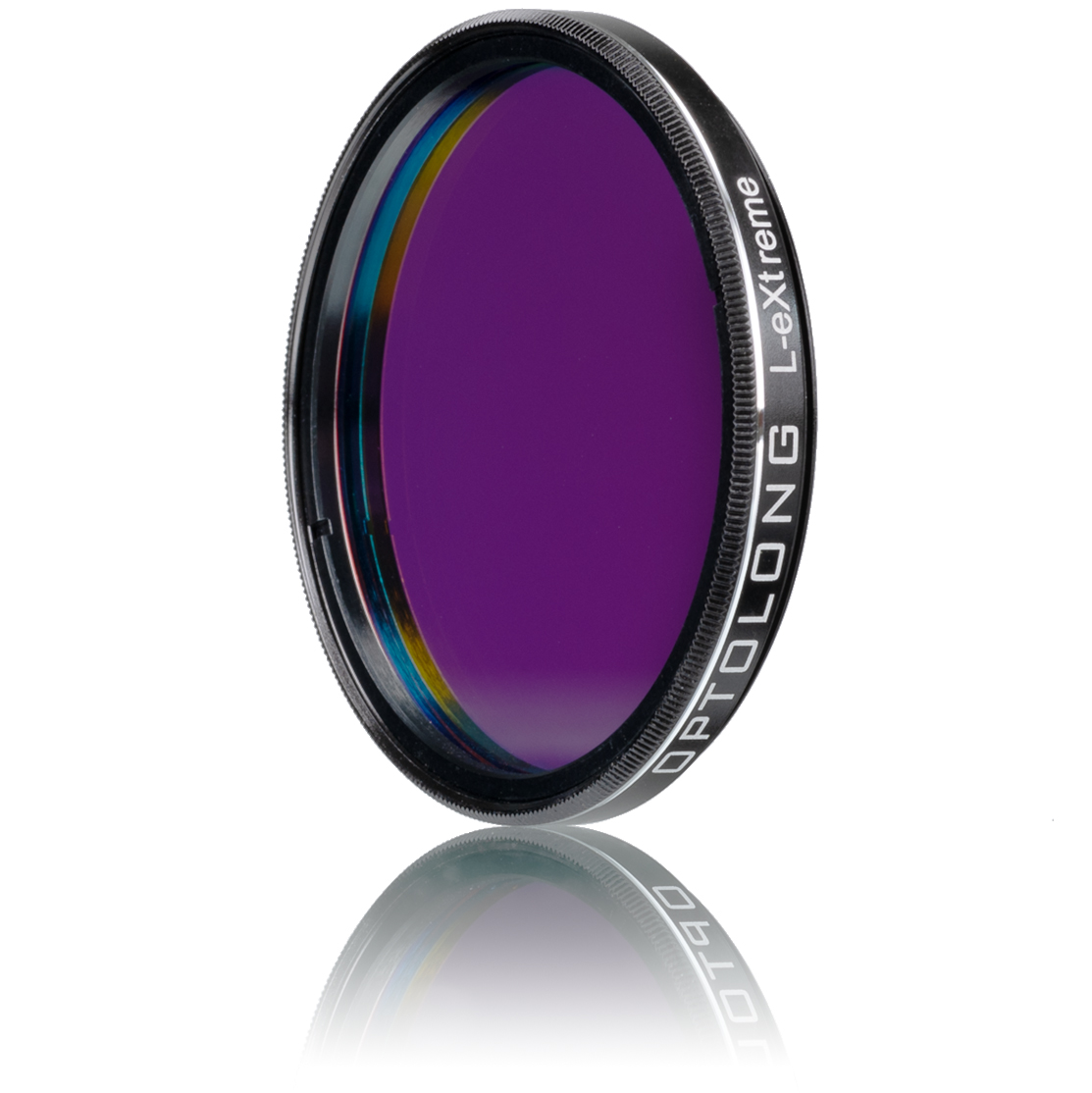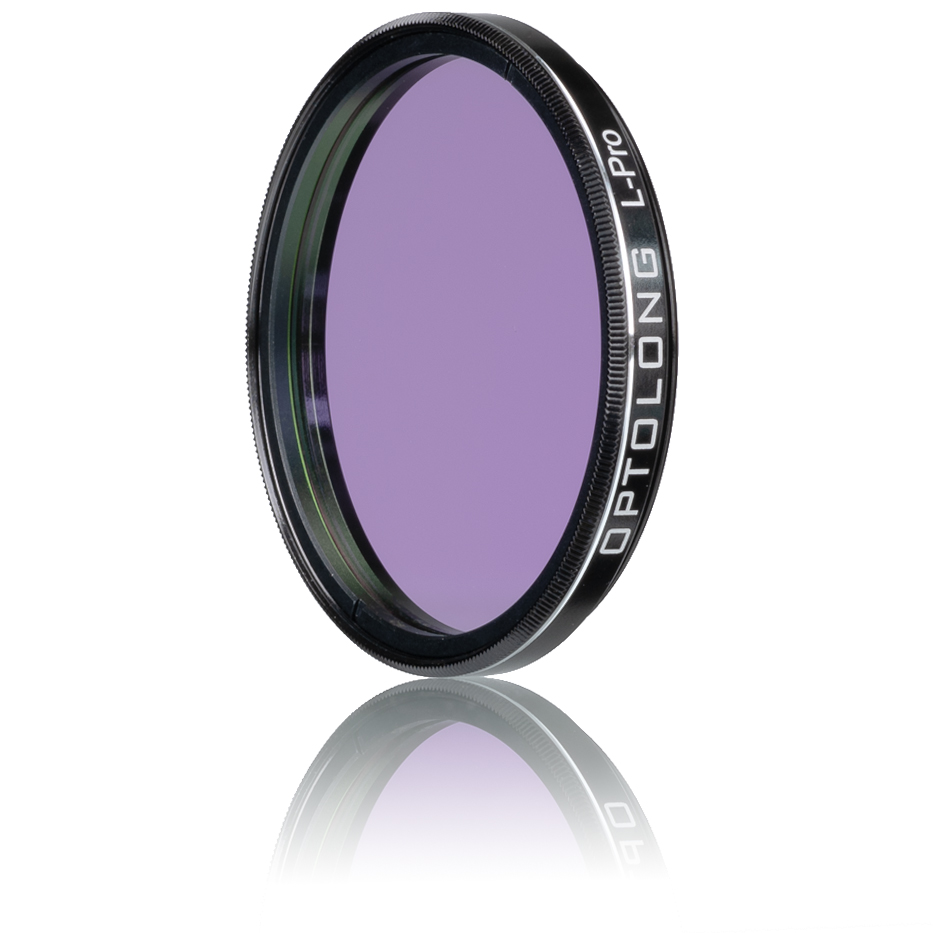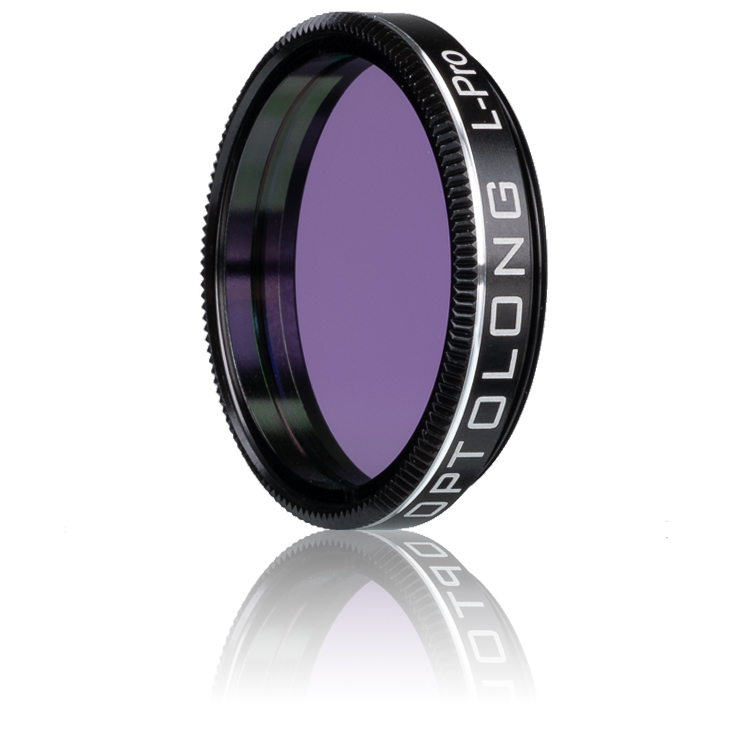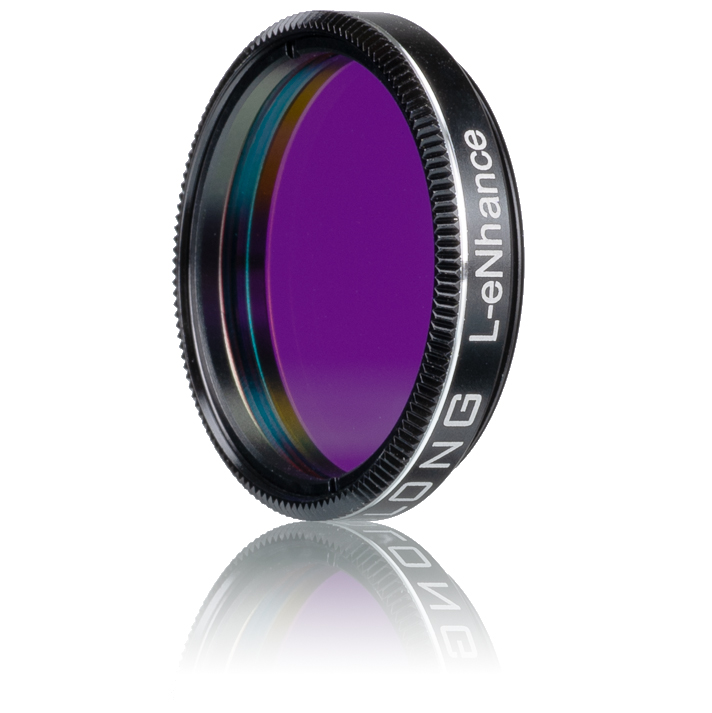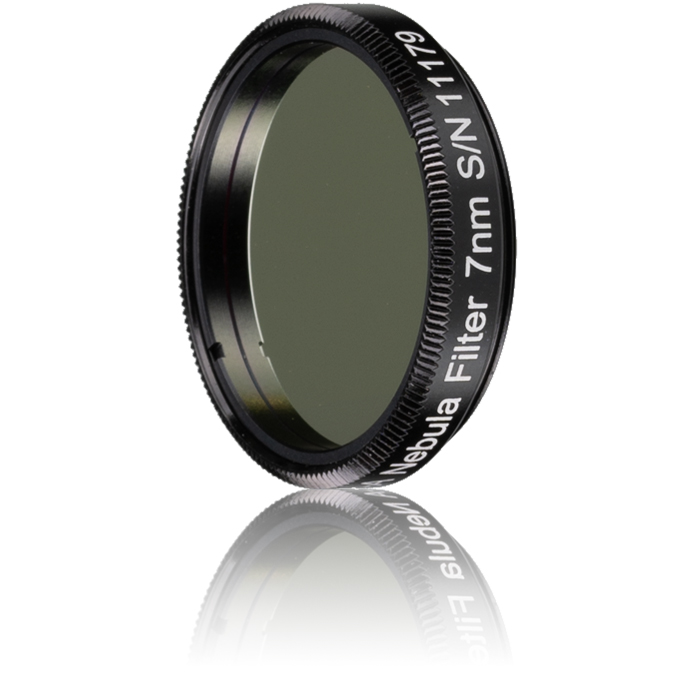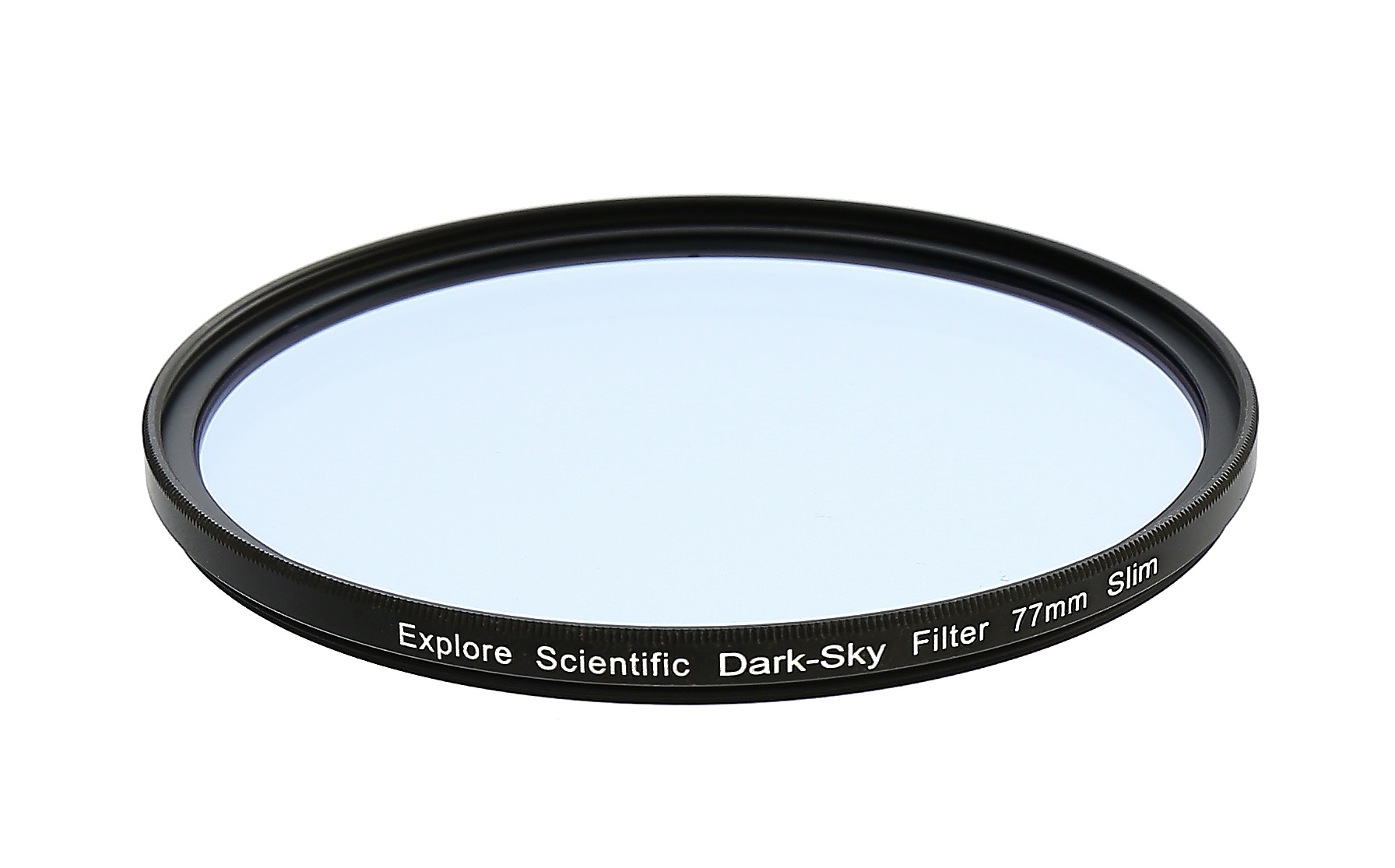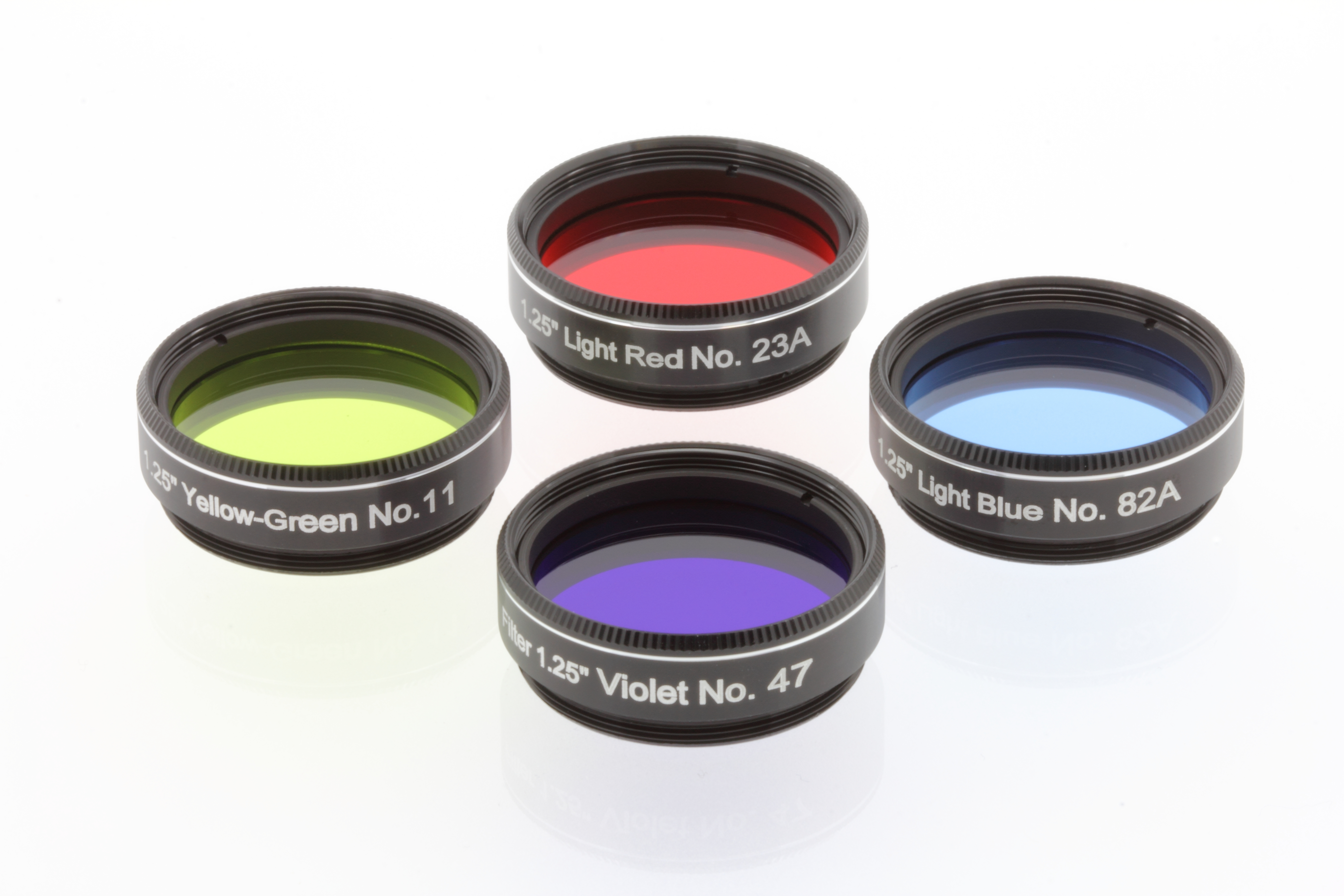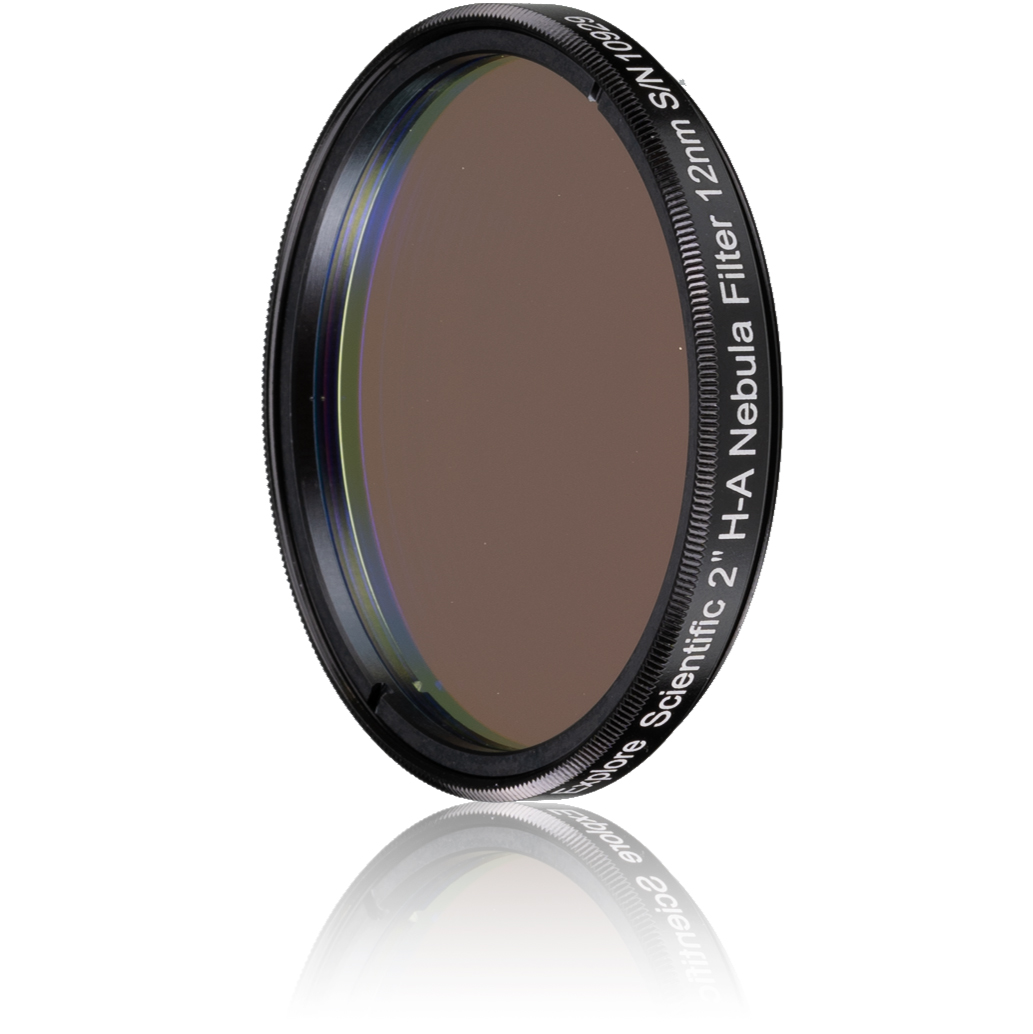
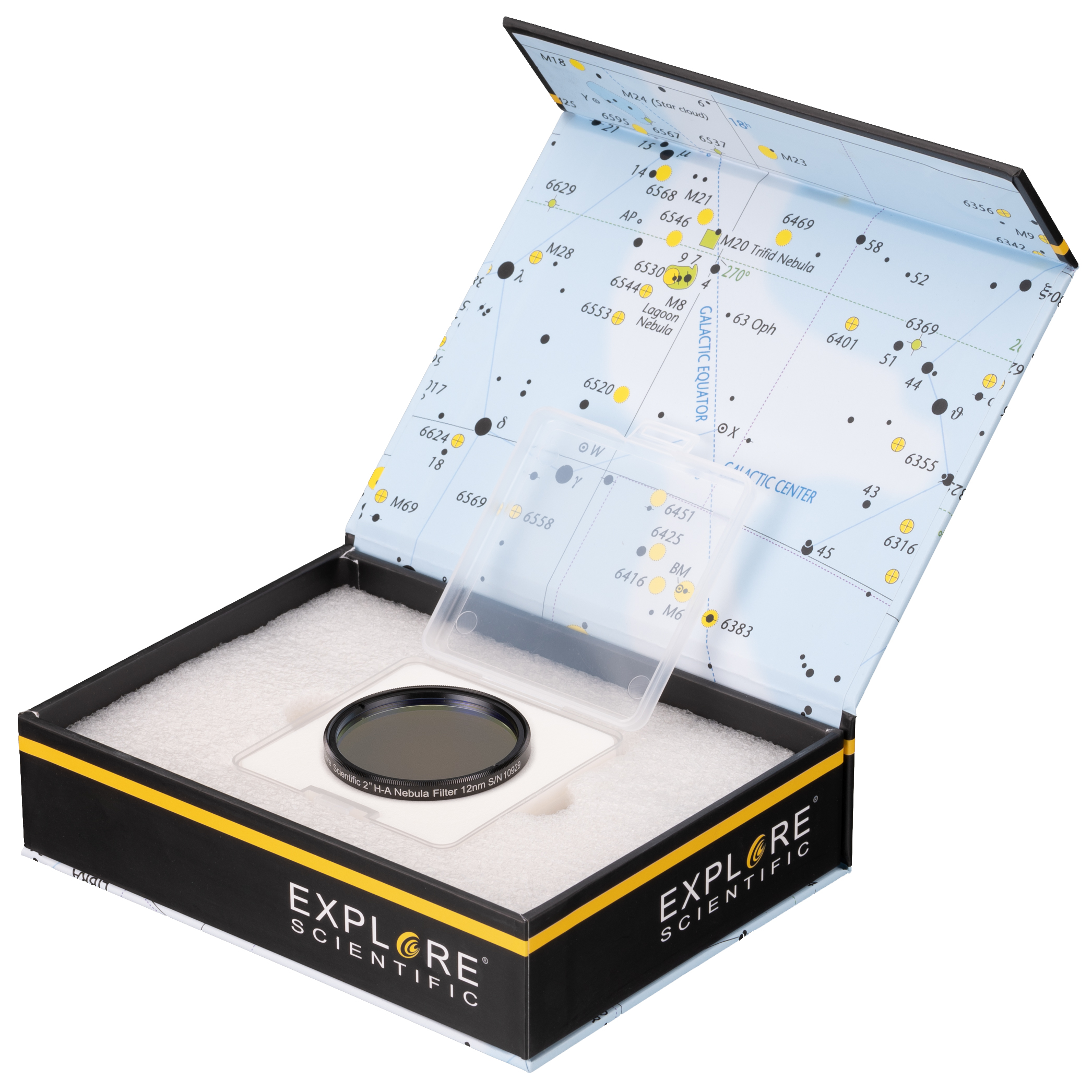
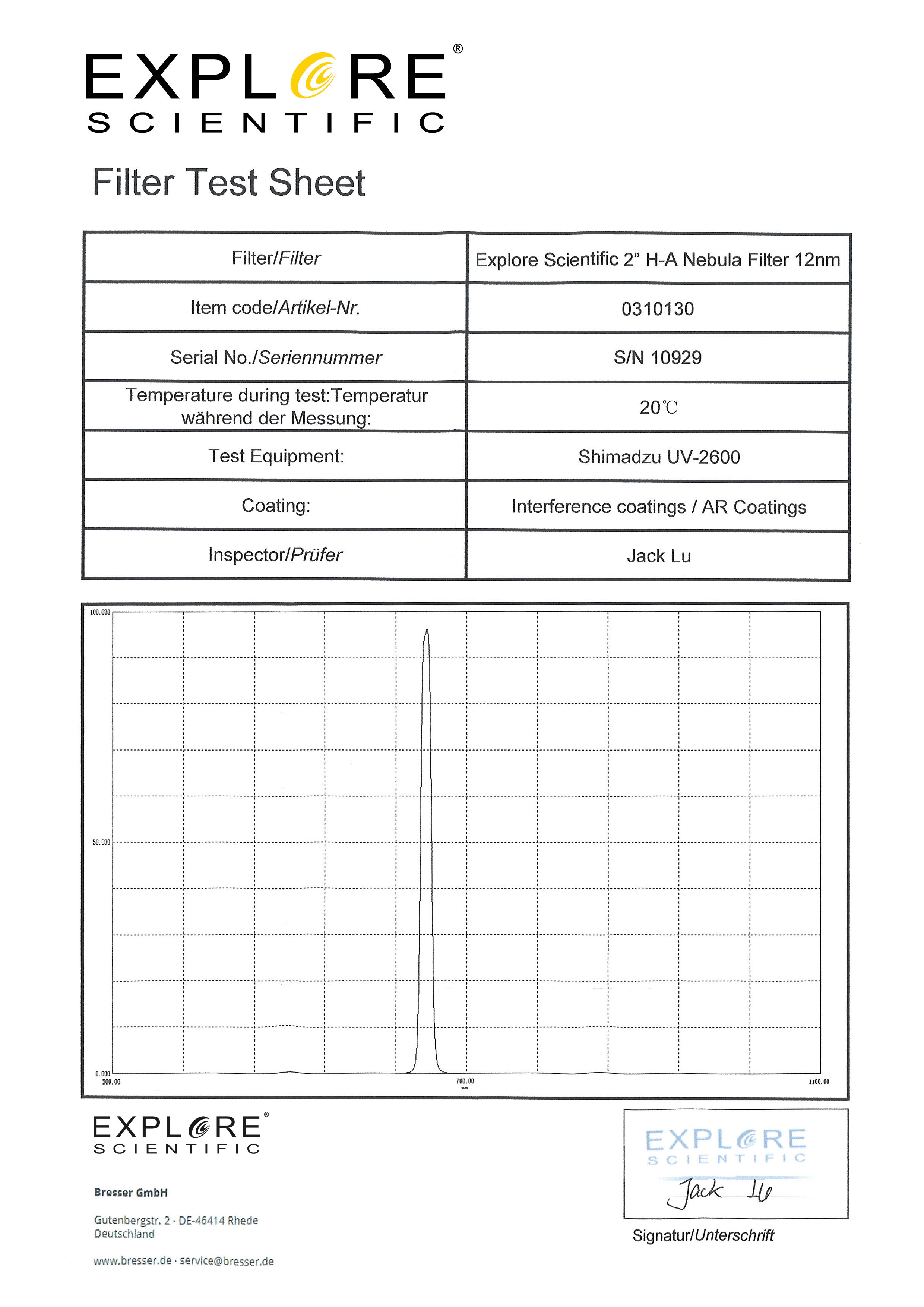









The EXPLORE SCIENTIFIC H-Alpha filter allows photography of red glowing emission nebulae; ideal for use near cities, in slightly light-polluted skies.
- High-quality EXPLORE SCIENTIFIC H-Alpha filter
- Only lets the emission lines of hydrogen pass
- Absorbs all other emission lines and almost all artificial light
- Ideal for use near the city, with slightly lightened skies
- Band pass width: 12 nm
- Better contrast and more details achievable for urban astrophotographers
- Blocks almost all light from mercury and sodium vapor lamps
- Many of the red glowing emission nebulae are only visible in full expansion on photos taken with this filter
- In spite of the existing light pollution amazingly good image results are possible
- Individual test certificate included to guarantee you receive a premium filter
€95.00*
% €189.00* (49.74% saved)Available, delivery time: 1-3 days
The EXPLORE SCIENTIFIC H-Alpha filter uses the characteristic of the so-called emission nebulae. These objects glow in certain colors, the so-called emission lines. The emission lines are associated with certain chemical elements - in this case the red glowing hydrogen. This filter blocks all other colors (and therefore almost all artificial light) and lets only the emission lines of hydrogen through. Especially the interfering light of mercury and sodium vapor lamps is effectively blocked. The effect is amazing: suddenly, nebulae become visible on photos in locations which appear completely empty without the filter.
The EXPLORE SCIENTIFIC H-Alpha Nebula filter has been developed exclusively for astrophotography. Especially in slightly light-polluted skies many emission nebulae only become visible and are shown in full expanse on astrophotos when using this filter. The H-Alpha nebula filters make astrophotography near the city possible and the use leads to amazingly good image results despite the existing light pollution. A must for every urban astrophotographer.
The EXPLORE SCIENTIFIC nebula filters are delivered with an individual test report - so you can be sure to get high quality filters.
FEATURES
- H-Alpha filters are used for astrophotography exclusively
- Allows photography of emission nebulae that glow in the light of red hydrogen
- Many of these emission nebulae are only visible in their full expansion in the photos taken with this filter
- Blocks almost all artificial light, especially from mercury and sodium vapor lamps
- Only allows the emission line of red hydrogen to pass through
- Transmission bandwidth: 12 nm
- Allows more contrast and detail for all urban astrophotographers
- Ideal for use near cities, in slightly brightened skies
- Individual test certificate included to guarantee you receive a premium filter
SCOPE OF DELIVERY
- 1x 2'' H-Alpha Nebula Filter
| Colour: | black |
|---|---|
| Field of application [Telescope-filter]: | Light Pollution Filter for Astrophotography |
| Material: | Glass, Plastic |
| Telescope filter type: | Nebula Filter |
Similar products
Customers also viewed
